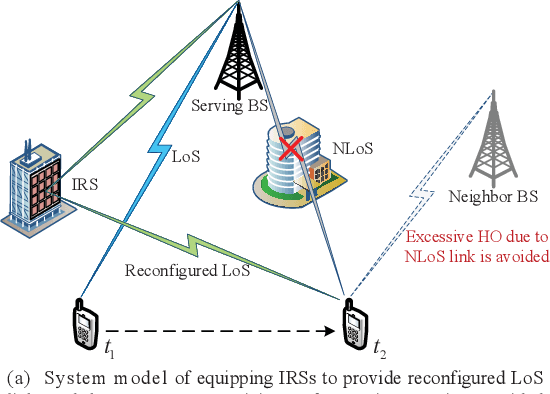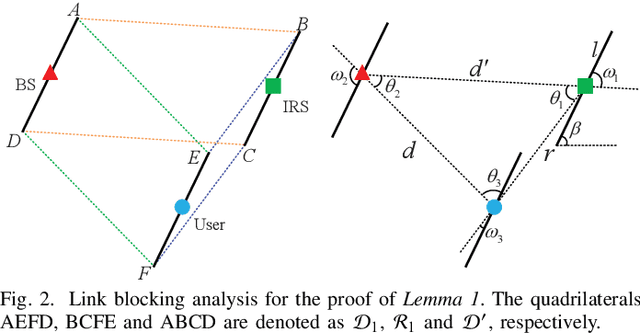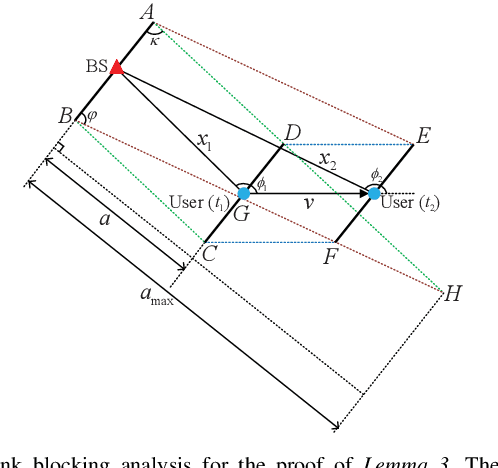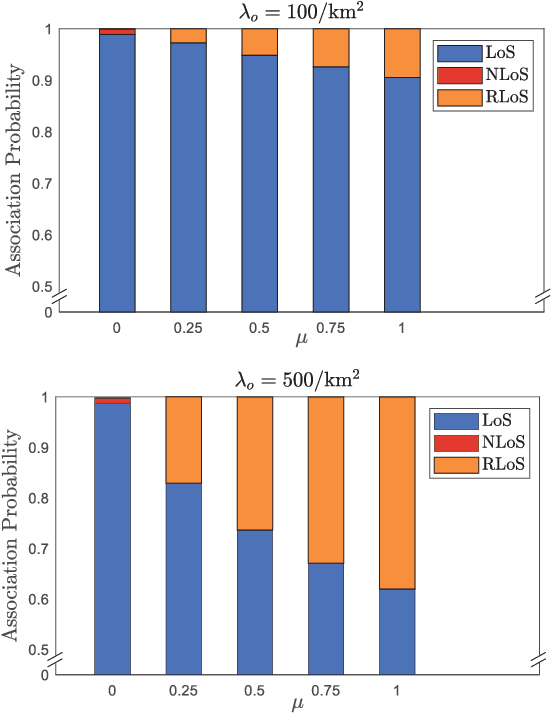Analysis of Intelligent Reflecting Surface-Enhanced Mobility Through a Line-of-Sight State Transition Model
Paper and Code
Mar 12, 2024



Rapid signal fluctuations due to blockage effects cause excessive handovers (HOs) and degrade mobility performance. By reconfiguring line-of-sight (LoS) Links through passive reflections, intelligent reflective surface (IRS) has the potential to address this issue. Due to the lack of introducing blocking effects, existing HO analyses cannot capture excessive HOs or exploit enhancements via IRSs. This paper proposes an LoS state transition model enabling analysis of mobility enhancement achieved by IRS-reconfigured LoS links, where LoS link blocking and reconfiguration utilizing IRS during user movement are explicitly modeled as stochastic processes. Specifically, the condition for blocking LoS links is characterized as a set of possible blockage locations, the distribution of available IRSs is thinned by the criteria for reconfiguring LoS links. In addition, BSs potentially handed over are categorized by probabilities of LoS states to enable HO decision analysis. By projecting distinct gains of LoS states onto a uniform equivalent distance criterion, mobility enhanced by IRS is quantified through the compact expression of HO probability. Results show the probability of dropping into non-LoS decreases by 70% when deploying IRSs with the density of 93/km$^2$, and HOs decrease by 67% under the optimal IRS distributed deployment parameter.
 Add to Chrome
Add to Chrome Add to Firefox
Add to Firefox Add to Edge
Add to Edge